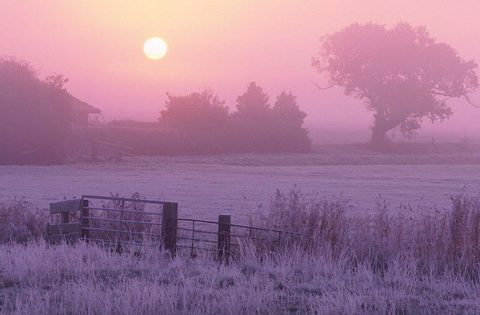
The Gardner Agriculture Policy Program is funded by the Leonard and Lila Gardner/Illinois Farm Bureau Family of Companies endowment. This generous gift is dedicated to the memory of Len Gardner, a leading voice on agricultural policy for decades. The program will coordinate and prioritize analytical and outreach efforts for farm, conservation and international trade policies, elevating the University of Illinois’ voice in the national debate.
The cover crop project seeks to provide farmers with a practical web-based decision support tool designed to help manage cover crops in their fields. The project makes use of existing research to demonstrate the potential for cover crops, as well as providing useful information for decision making and management of this practice. It will also seek to apply future research on cover crops as results are incorporated into updates and new iterations of the tool. This remains a work in progress with a goal towards adapting with the science.
Latest in Gardner Policy Series

Circumventing the Federal Budget Process: Crop Insurance Premium Subsidies
Over the last two years, Federal crop insurance premium subsidies have been raised far more by procedures outside the Farm Bill than inside the Farm Bill. Two USDA administrative actions raised the premium subsidy rate for ECO insurance to 80%. They conservatively are estimated to raise Federal premium subsidies by $13.2 billion over 10 FYs. This case study illustrates how the Federal budget process can be circumvented, calling into question its fiscal integrity and usefulness.
The Reconciliation Farm Bill: Top Five Most Problematic Changes to Farm Policy, #4
The number four spot in the top five most problematic changes to farm policy in the Reconciliation Farm Bill belongs to possibly the most obscure change in the agriculture title. Congress provided an additional subsidy to crop insurance companies to encourage continued sales of policies in high-risk states. This article explains the policy change and offers some perspective.
Projections of Commodity Program Payments for Illinois in 2024 and 2025
Commodity program payments for 2024 are estimated to be limited to ARC-CO in some southern and northern Illinois counties for corn and soybeans. Commodity title program payments seem more likely to occur for the 2025 commodity title program. Even with the larger payment expectations, due in part to changes to commodity programs in the OBBB Act, 2025 return prospects remain negative for cash rented farmland in Illinois. This could lead to calls for additional ad hoc support for 2025.
The Farm Bill in Reconciliation: Loophole as Rosetta Stone; Review and Comment
As of July 4, 2025, budget reconciliation, bearing the title “One Big Beautiful Bill Act,” is Public Law. Among its many provisions are revisions to the major mandatory programs of the Farm Bill, reauthorizing them through 2031. Rushed through Congress under special budget procedures and a dearth of deliberation, much about this new federal law remains confusing and dismaying. This article reviews an expanded loophole for farm program payment limitations as a potential Rosetta Stone.
Brazil Begins Planting with Expected Record Acreage Driven by High Demand but Low Margins
Farmers across Brazil have begun planting the 2025/26 crop season, with expectations for another record in corn and soybean acreage. In its preliminary estimate released on October 14, Conab projected that Brazil’s soybean acreage will increase by 3.5%, reaching 121 million acres – the largest area on record. Like soybeans, Brazilian corn acreage is also expected to expand by 4% in the 2025/26 season, reaching 56 million acres, according to Conab’s initial estimates.
U.S. Soybean Harvest Starts with No Sign of Chinese Buying as Brazil Sets Export Record
The U.S. soybean harvest began in September without any orders from the world’s largest buyer: China. American producers are harvesting a crop the U.S. Department of Agriculture (USDA) estimates at…
U.S. Tariffs on Brazil: Potential Implications for Agricultural Trade and Consumers
The 50% tariffs imposed by President Trump on Brazilian imports are expected to bring some implications for agricultural trade between the two countries. While the measure was softened by hundreds of exemptions announced on July 31, the policy still affects a wide range of goods and is likely to shift commercial dynamics across multiple sectors. This article examines the scope of the tariffs, with a focus on the agricultural products impacted and the potential consequences.
Farmer Demonstration Networks as a Catalyst for Conservation Adoption
Cover crop use in the Corn Belt remains low, despite significant public and private investment in efforts to support adoption. The US Department of Agriculture alone invests $6.5 billion annually into conservation programs, many of which focus entirely on support payments rather than technical support. Our results suggest that demonstration farm networks, led by real farmers trialing practices on their working farms, are an effective tool to share information with conservation-curious producers.
Swampbuster Stands, Part 2: The Constitutionality of Conservation Compliance
“It is hardly a lack of due process for the Government to regulate that which it subsidizes” (Wickard v. Filburn, 1942). That admonition from Justice Robert Jackson, writing for a…
Swampbuster Stands, Part 1: Reviewing the Iowa Lawsuit Challenging Conservation Compliance
Conservation compliance, including the Swampbuster provisions at issue in the lawsuit discussed in this article, were the policy response to substantial problems on the ground and for farm fields. Those problems can be traced to the Dust Bowl of the 1930s and a return of wind erosion problems during droughts of the 1950s. More directly, conservation compliance traces to the reckless policy decisions in the early 1970s, including the Agriculture and Consumer Protection Act of 1973.






